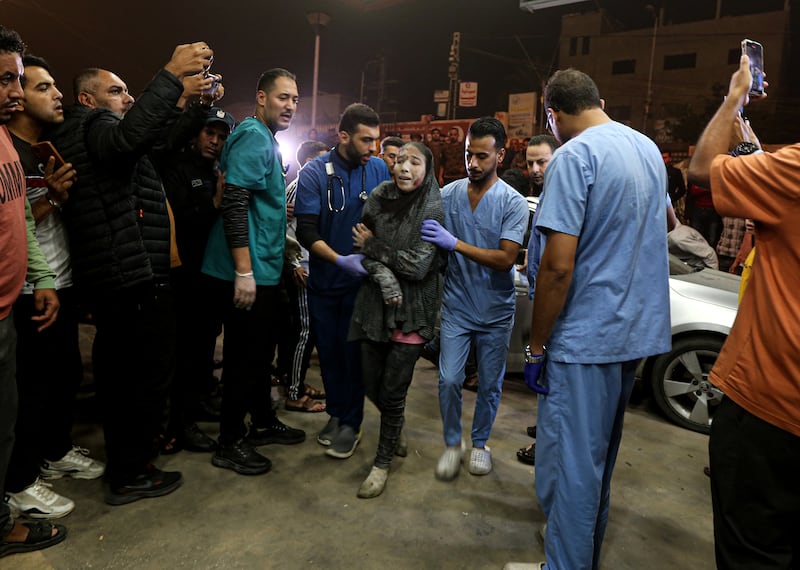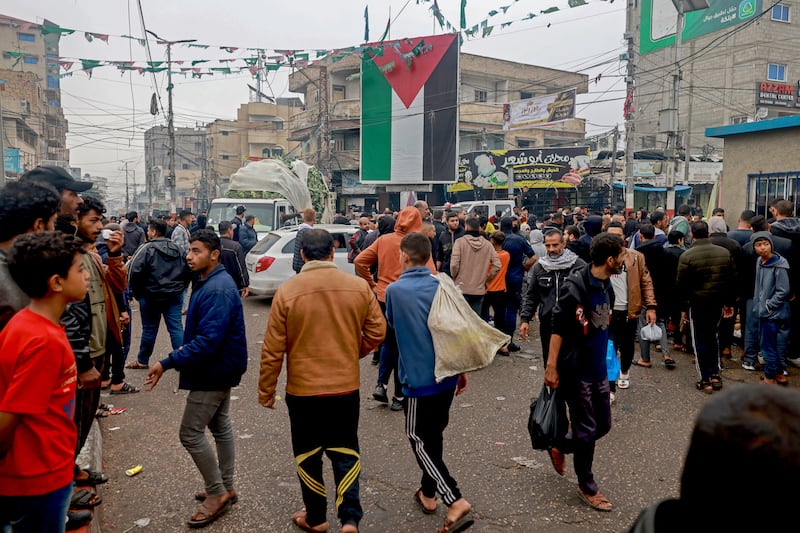With fierce fighting raging across Gaza, the Israeli military announced on Tuesday that it was now “in the heart” of Khan Yunis, the Hamas stronghold in the south. Israel also said its military was in Jabalya and the Gaza city neighbourhood of Sejaiya in the north.
The Israeli Defence Forces (IDF) said they entered Khan Yunis under heavy Hamas fire and clashed with dozens of militant cells. Maj gen Yaron Finkelman, the head of IDF’s southern command, said the army will continue its attack.
“We are in the most intense day [of fighting] since the beginning of the ground operation in terms of Hamas terrorists killed, the number of encounters with the enemy and the volume of fire our forces use, both from the ground and the air.”
Prime minister Binyamin Netanyahu, speaking at a press conference on Tuesday, said: “After the war, Gaza must be demilitarised, and no international force can be responsible for that. Only the IDF.”
Charlie McGettigan joins artists calling for Israel to be expelled from Eurovision Song Contest
Taoiseach Micheál Martin accuses Israel of war crime over blocking of aid entering Gaza
‘What’s left to bomb?’ Israel’s plan to expand campaign strikes fear into Gazans
Irish Red Cross supporting families of children from Gaza arriving for receive medical treatment

Many of the one million or so residents who fled from northern Gaza when Israel first invaded went to Khan Yunis. Israel estimates that about one third of people in the city have already left after leaflets were dropped urging people to flee south towards Rafah on the Egyptian border or west towards the Mediterranean coast.
UNRWA, the United Nations refugee agency, warned that no place in Gaza was safe. It said residents were being pushed into an area comprising less than one-third of the Gaza Strip, and were “in need of everything: food, water, shelter, and mostly safety”.
The number of people killed in Gaza since the start of the war, 60 days ago, is more than 16,000, the Hamas-run health ministry reported on Tuesday. Israel began its strikes on Gaza following the attack on October 7th when Hamas gunmen crossed the border and killed 1,200 people, taking about 240 others hostage.
During the one-week ceasefire which ended on Friday, 110 Israeli and foreign hostages were freed. One hundred and thirty eight remain in captivity. Some of those who returned last week, along with relatives of those left behind, met on Tuesday with Israel’s war cabinet.

The meeting followed comments by US state department spokesperson Mathew Miller that Hamas had refused to release 10 Israeli women hostages who are known to be alive, leading to the collapse of the truce. Mr Miller said Hamas feared that the women’s accounts of their captivity could significantly tarnish Hamas’ reputation. Assertions of sexual abuse suffered by hostages was confirmed by Israeli officials on Tuesday.
The relatives demanded that Israeli leaders work to bring back all the hostages immediately and said they should prioritise this over defeating Hamas.
Mr Netanyahu told the families that it was only Israel’s military campaign that forced Hamas to agree to last week’s hostage release. “There is no possibility right now to bring everyone home,” he said. “Can anyone really imagine that if that was an option, anyone would refuse it?”
He also clarified that the “all-for-all” option – releasing all the hostages in return for Israel freeing all the Palestinian militants it holds – was never on the table.
Hamas official Osama Hamdan said in a press conference on Tuesday there will be no negotiations or exchange of detainees until Israel’s aggression against the Gaza Strip stops. A Qatari foreign ministry spokesperson said efforts to release the remaining hostages are ongoing.
According to the Wall Street Journal, Israel is considering flooding Gaza’s tunnels with seawater, and has prepared a series of pumps to do so. IDF chief of staff maj gen Herzi Halevi described this as “a good idea” and one of a number of options for destroying the vast Hamas tunnel network.













